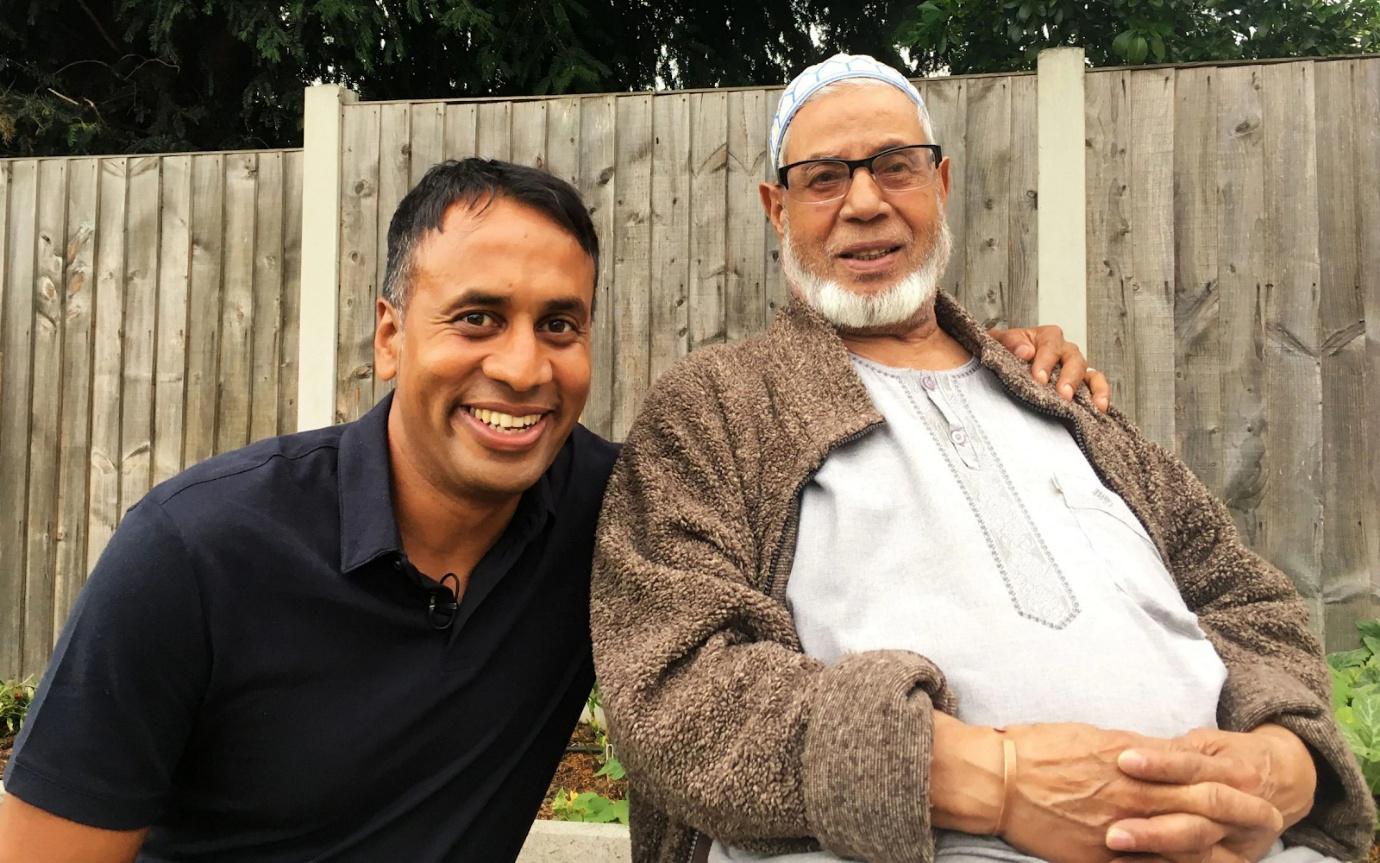A deeply personal portrayal of the sacrifices and contributions of the thousands of British Bangladeshis who came to Britain in the 1970s and 1980s and the hardship and racism they faced while supporting the development of the British economy.
The name of a small park, sewing machines, curries and the sacrifices of my parents are all things that I have a greater appreciation for after viewing the ‘British Bangladeshis’ episode of A Very British History. In this programme, Dr Aminul Hoque deep dives into the history of Bangladeshi migrants who have come to the UK. Expertly balancing the use of archival footage, interviews with his father and other migrants, the episode is both a sweeping and yet deeply personal portrayal of the sacrifices and contributions British Bangladeshis have made to British society.
“During the two World Wars, Sylhetis were among the thousands of South Asian lascars who died keeping Britain’s vital supply lines going.”
Early into the episode, Hoque explores the roots of British Bangladeshi migration. He explains over archived footage of young Bengali men stepping onto British soil for the first time that these men had worked as lascars (sailors) on the trade route between Britain and India. My grandfather was one of those men, and it was fascinating to be able to see footage of these men rather than only imagining them. Some men had even given their lives to support the war effort during both world wars. A few men had decided to come and work in the UK, aiding in the effort to rebuild the nation along with so many other Commonwealth migrants. The roots of British Bangladeshi migration are truly inspiring and noble; I appreciated the use of the footage in bringing these roots to life.
“He was keen to tell his story of migration and I was absolutely captivated there and then.”
The majority of the episode is concerned with telling personal stories to support telling the general story of British Bangladeshi migration. It is a treasurable moment when a first-generation parent decides to tell their migration story to their children. Aminul Hoque listens to his father, Shamsul Hoque, with rapt attention as he recounts coming to the UK in 1963, from what was then East Pakistan, as a Commonwealth citizen who had a work voucher. Aminul asks his father how he felt about working such long hours (8AM to 8PM, Monday to Saturday), and his father responds by stressing that he would take even more hours as money was needed to pay for rent, food and to support the family he left back in East Pakistan. It’s a typical South Asian parent response! One that I couldn’t help but compare to my own family. My parents, uncles and aunties do the same even after decades of living here as it is always stressed to us: family is never left unsupported.
“You know, pretty much everyone was sewing. You could hear the humming, actually, at night. We didn’t have many problems with neighbours complaining because everyone was sewing until 3am in the morning!”
Indeed, many Bengali women contributed to the British rag trade and to their own family’s income through sewing. Hoque visits Asma and Halima Begum. Asma recalls how her mother Halima taught other women how to sew. I have memories of playing with neighbours as my own mother sat with the other women, the hum of sewing machines a constant companion to our childhood games. Only now do I understand how significant the sewing machine is: it is a symbol of female British Bangladeshi contribution to the economy.
“The resilience and resistance had taken two decades to develop, but we had now become visible.”
Yet, establishing a life in Britain did not come without its challenges. The programme shifts to a more sombre tone, as Hoque refers to an independent study titled Blood on the Streets and Bangladeshis in Britain, a Home Committee report produced in 1986. Both acknowledged the challenges and discrimination faced by many British Bangladeshi migrants and their families. The “watershed moment” comes when a young garment worker, Altab Ali, was killed while coming home from work. The moment galvanised the local community to embark on what became known locally as the 1978 ‘Battle of Brick Lane’. Migrants and those born British collaborated to have their voices heard, and the representation of this alliance between activist Jalal Rajonuddin and Cathy Forrester is especially heart-warming. The Home Committee report was a breakthrough, an official recognition that the British Bangladeshi community was here to stay. A small park in East London was renamed after Altab Ali, and he has been commemorated every year since. This scene brought great significance to the park I have walked through and passed and wondered about many times in my life. Certainly, the efforts of the British Bengali migrants and the local community who supported them in the sixties and seventies, have helped shape London into the multicultural and open hub it is known as today.
“Our culture, our curries and our community are now a unique part of British life.”
Overall, what I find is the main takeaway from this episode is that being British Bangladeshi is something to be proud of. Our identity is intrinsic with having a resilient work ethic, to caring about family and neighbours, to never forgetting the struggles of those who came before us. British Bangladeshis not only support the British economy but they brought a special cultural currency in the form of well-loved curries that are now a staple part of British culture. The road to being recognised as a permanent part of the British community was difficult, but the fruits of those efforts are seen by me in my own life as a second-generation migrant, like Dr Aminul Hoque sees in his three daughters.
This episode of A Very British History is a gratifying celebration of local and national history, one that I would recommend to any person of any background. The weaving together of archival footage and personal stories produces a well-supported yet deeply intimate understanding of what it means to be British Bangladeshi. Dr Aminul Hoque’s exploration makes it unequivocal that the story of British Bangladeshi migration is certainly part of A Very British History. This ‘British Bangladeshis’ episode is uplifting, deeply important in representing the British Bangladeshi community and the show itself is a great example of a programme that helps us all understand our history. The BBC should put the show back on IPlayer as I hope to be revisiting this episode more than a few times in the future.







